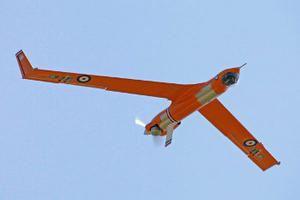UAVs perform autonomous search-and-rescue operations
Researchers developed sophisticated search algorithms which allow UAVs autonomously to analyze the terrain and use probabilistic models to determine a lost person.s likely route; the UAVs will make searching for lost people much cheaper, faster, and safer than using helicopters

This Boeing-built UAV is specifically designed for search and rescue applications // Source: boeing.com
Unmanned drones could make searching for lost hikers much cheaper, faster, and safer than using helicopters, according to researchers at Brigham Young University in Utah. They are turning drones, best known for their search-and-destroy capabilities, into search-and-rescue vehicles, New Scientist reports.
When hikers go missing in the mountains, search-and-rescue (SAR) teams mobilize in a complicated and very expensive operation to find them. The National Park Service alone spends about $4 million a year rescuing the lost, and this is saying nothing of individual city and county expenses. What is more, search teams can be imperiled by bad weather.
The drone project simplifies all this by equipping a miniature aircraft, just a 4-foot wingspan, with a video camera. A SAR operator directs the plane by clicking on a computerized map. The plane can also work autonomously, by analyzing the terrain and using probabilistic models to determine a lost person’s likely route.
Experienced SAR team leaders helped develop the autonomous search algorithms. Lost hikers may seem to wander randomly, but they usually seek lower, flatter ground. The plane analyzes terrain maps to predict where a hiker might end up.
In trials, operators using the craft have taken between 35 and 150 minutes to find a dummy dumped in the wilderness.
The research team, led by Lanny Lin, Michael Roscheck, Michael A. Goodrich, and Bryan S. Morse of BYU’s computer science department, led a trial last fall in which they spent thirty minutes training a SAR team leader on how to use the drone. Afterward, it took him thirty-five minutes to locate a dummy they dropped in the Utah wilderness, according to the team’s paper (PDF).
So far, a human operator is needed to spot the missing person, because the UAV’s visual-detection algorithms aren’t advanced enough yet to find a person in the photos.
A paper on the team’s work was presented at the AAAI Conference on Artificial Intelligence in Atlanta.
